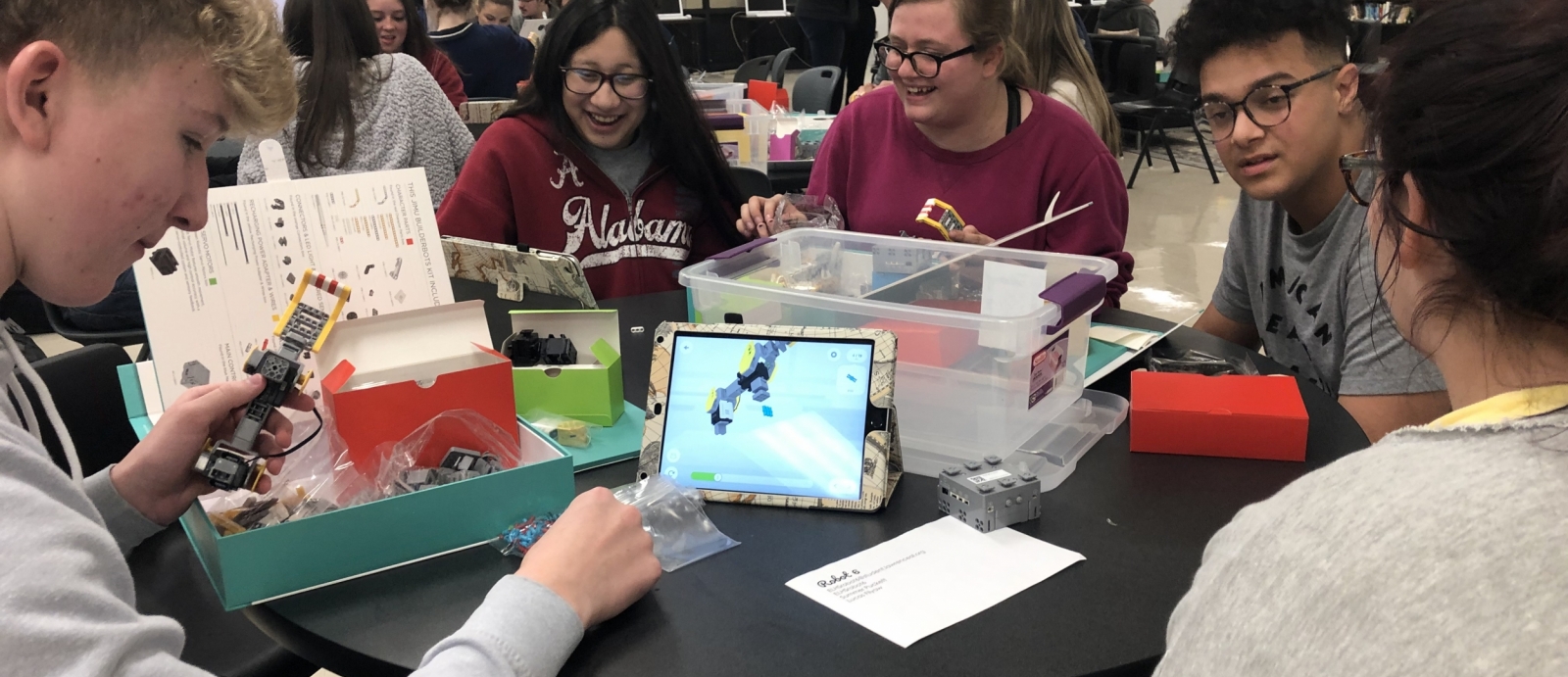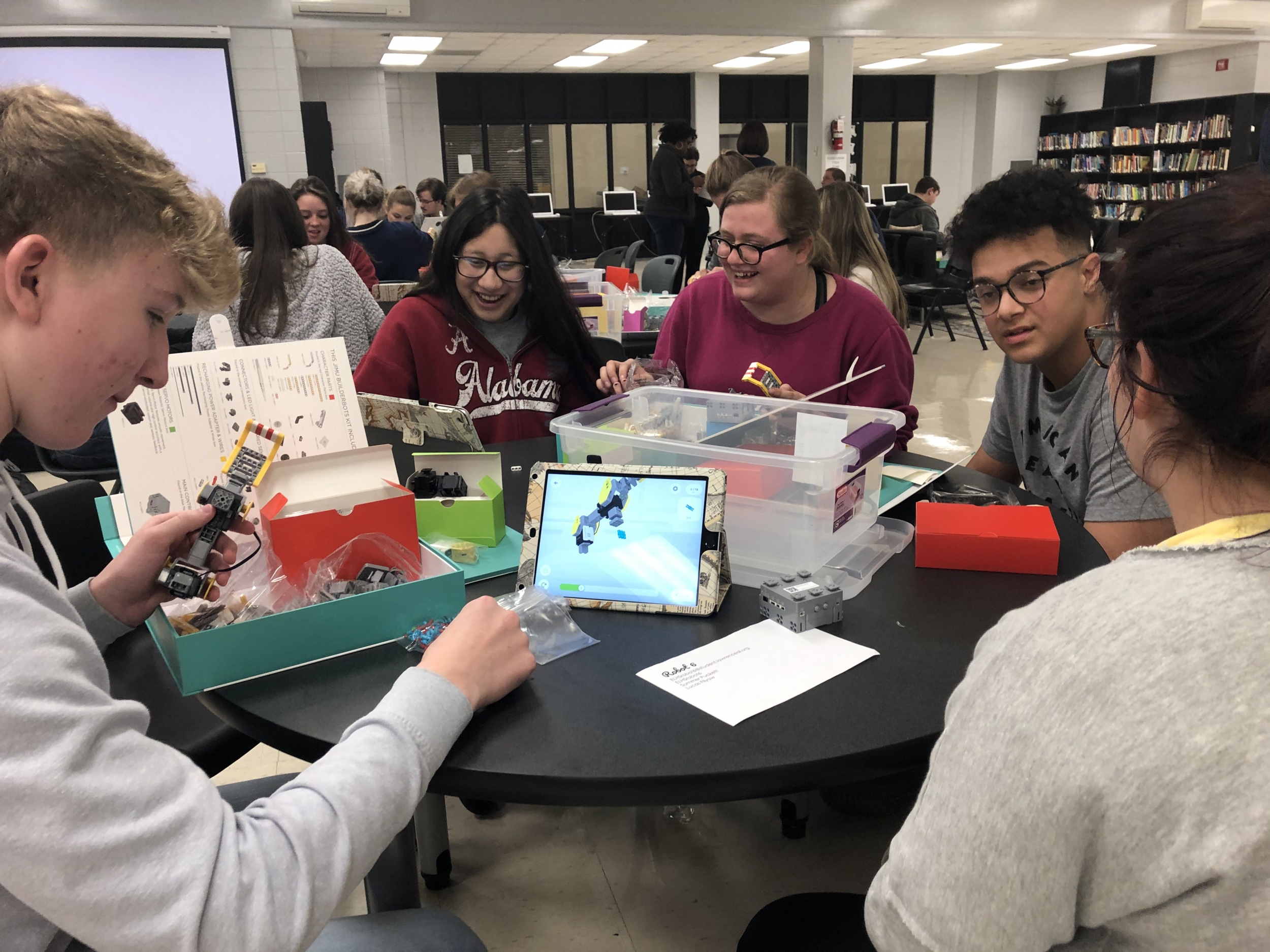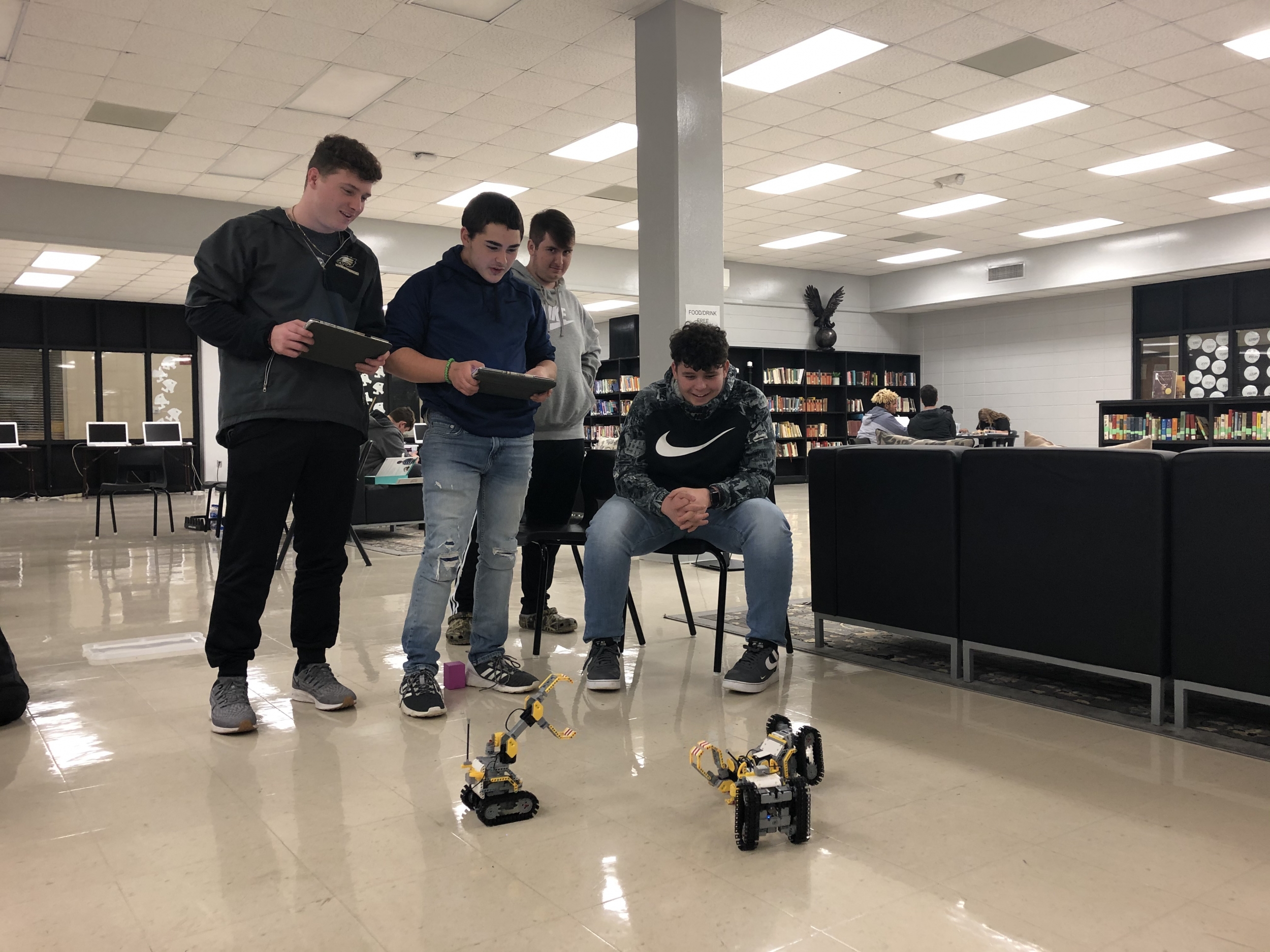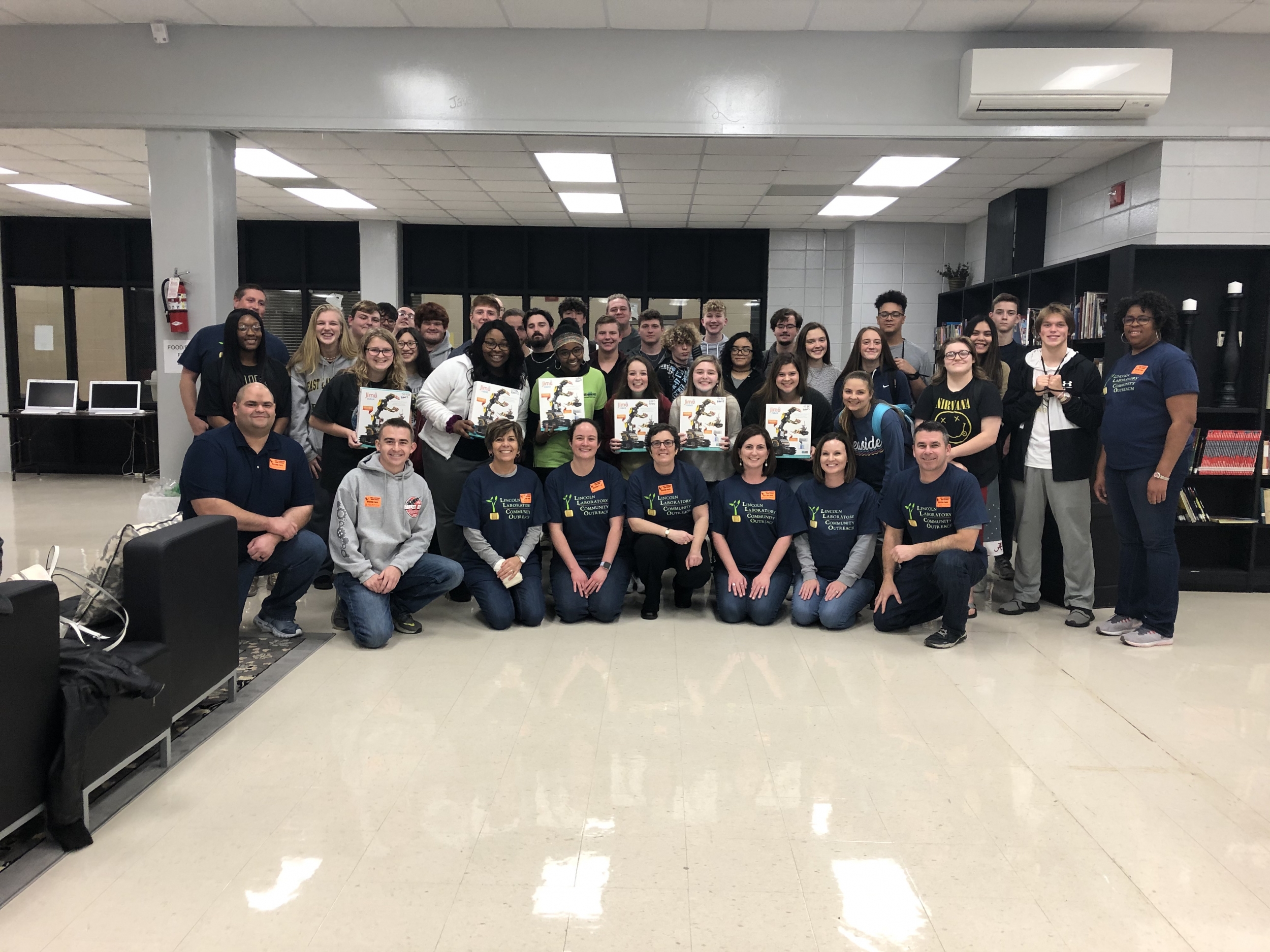
Huntsville staff make computer science a reality for Alabama students

Located about 40 miles from Lincoln Laboratory's field site in Huntsville, the East Lawrence High School is an underserved school in northern Alabama with limited STEM (science, technology, engineering, and mathematics) educational resources. The school has not been able to offer any kind of computer science classes since 2005 due to very limited funding.
On December 12, a team of 11 Laboratory staff set out to change that by providing an all-day STEM workshop for students interested in computer science at East Lawrence. These students live in an area with a high poverty rate. The STEM workshop supported the school's strategic plan to change the students' environment and trajectory for the future in a positive direction.
"The goals of the STEM workshop were to increase student interest in STEM-related career fields; increase pride, communication, and critical thinking skills; and help students learn coping skills by introducing them into an environment where failure and challenges can be overcome by innovation and determination," said Keith Henderlong, a staff member in the BMDS Integration Group.
The workshop began with opening remarks by the school's principal and computer science teacher. Then, Henderlong presented the students with an overview of the Laboratory and its mission. Patrick O'Shea used an interactive trivia game to tell the students about the many STEM-related career opportunities that are available to the students in northern Alabama.
Sarah Crews relayed a brief history of influential women in STEM and her own personal story. Then Yari Golden-Castano shared her personal journey to become one of 100 finalists for the Mars One mission program.

Before breaking for lunch, Chiamaka Agbasi-Porter, the community outreach coordinator at Lincoln Laboratory, gave an overview of the Lincoln Laboratory Radar Introduction for Student Engineers (LLRISE) program and a live demonstration of the radar built by past LLRISE students. She also encouraged the East Lawrence students to apply for the program.
Next, students and staff engaged in a conceptual activity called "Making a Peanut Butter and Jelly Sandwich," through which students learned about the importance of specifically and logically identifying steps with detail when coding. "This activity introduced students to several computer science concepts, such as the necessity of thoroughness while programming and the concept of debugging through iterative attempts to 'program a computer' to make a peanut butter and jelly sandwich," Henderlong said.
In the afternoon, students were paired up and given a UBTECH JIMU Robot Builderbot Kit, which is an educational tool that consists of 357 snap-together parts, four digital servo motors, an infrared sensor, a programmable LED light, and a control box. Students programmed JIMU robots through either the Blockly coding platform or by creating entirely new, custom actions with the Press, Record, Play function.
Staff then presented lessons learned and tips for building the robots, along with specific challenges for the students to work on in the future. For the rest of the school year, the students will dedicate one class per week to programming the robots and will work towards navigating their robots through a challenge course that staff provided to test the students' skills. At the end of the semester, the staff members will return to the school to judge the robots' ability to meet those challenges.

The students enjoyed the experience and offered the following feedback: "There are a lot more [STEM career] opportunities in my community than I realized"; "I enjoyed the hands-on aspect, rather than the normal class setting"; and "I can't believe I'm actually building a robot. This is fun, and I can't wait to see our robot in action."
"It's exciting when offering STEM instruction to students who have not been exposed to advanced technologies," Agbasi-Porter said. "Many students were thrilled to take advantage of LLRISE and Beaver Works Summer Institute coursework. It's our hope that we have encouraged students to pursue their interest in the engineering and science fields."